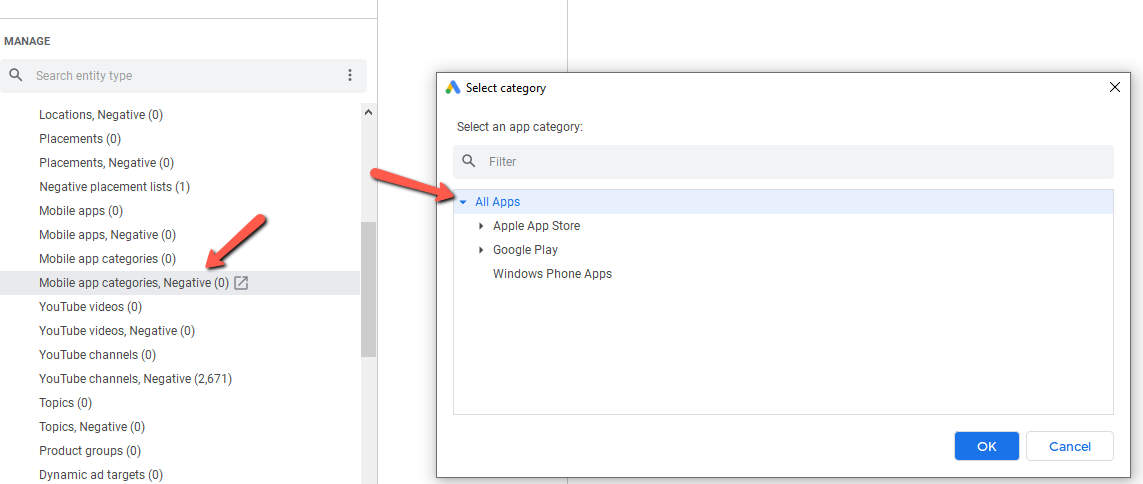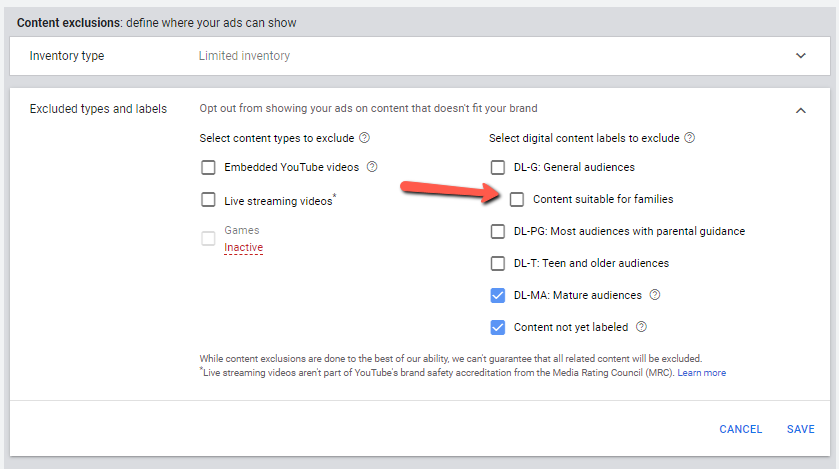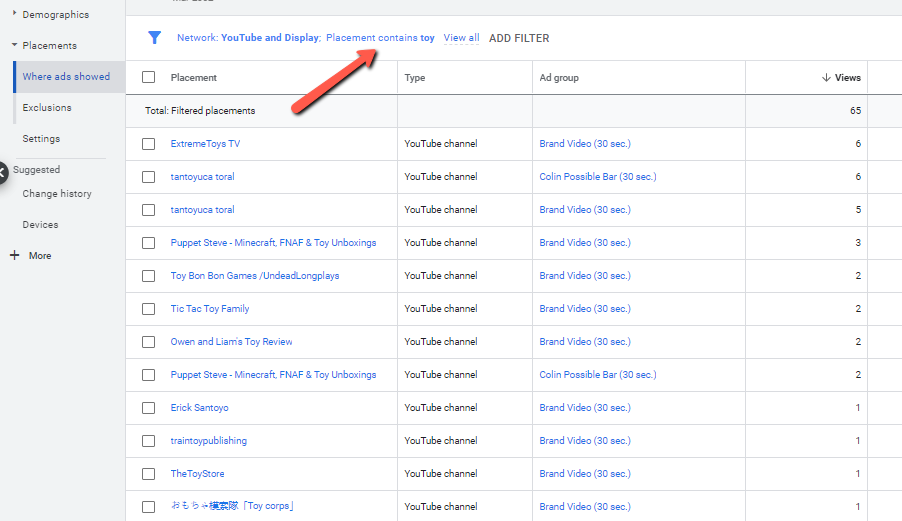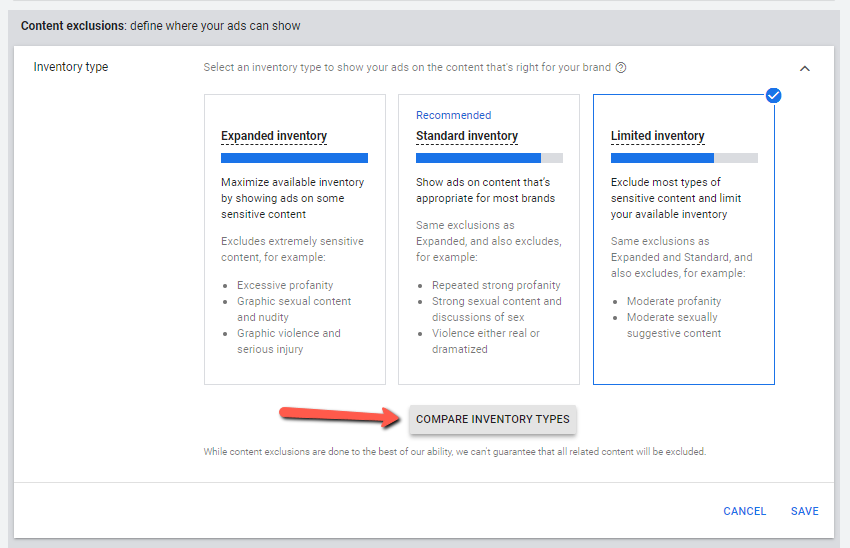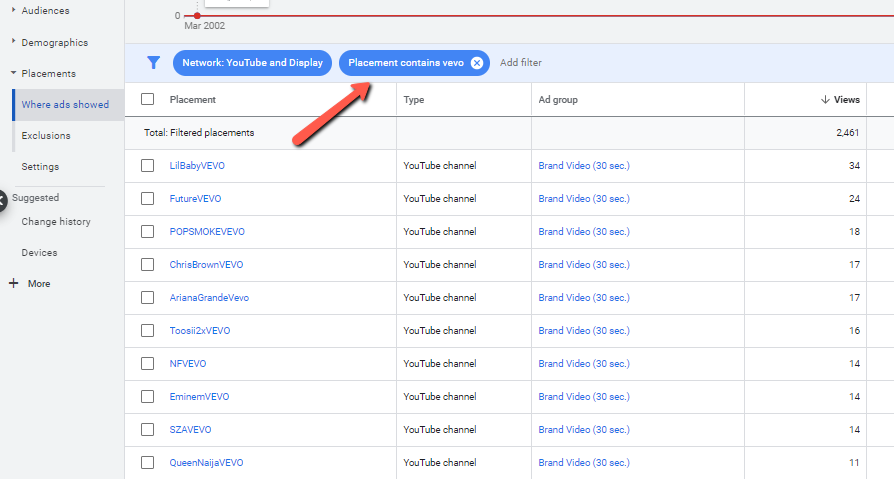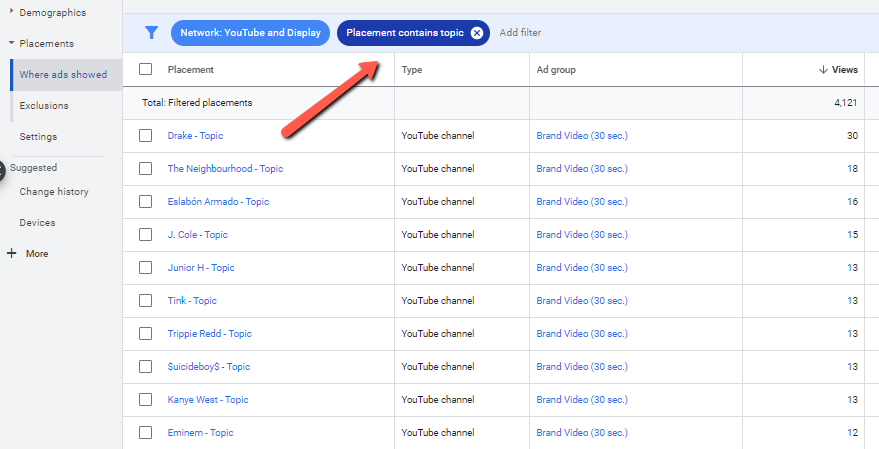5 YouTube Ad Placement Types You Need To Watch Out For
It’s true. There are some really bad placements for your ads on YouTube. For the unsuspecting advertiser that follows a basic campaign set up and uses some broader targeting options (like topics and keywords), they may just find that they’ve been serving ads before and during videos that either don’t deliver any value, or worse, hurt their brand from being associated with those videos.
In this post, we’re going to look at some of the types of videos most advertisers likely don’t want to show their ads with and what you can do to make sure this doesn’t happen to you.
Advertising on Apps
Some advertisers prefer not to have their videos show on apps, but what you likely don’t know is that if you choose a website to target with your videos in Google Ads, your ad will be eligible to show on apps if those websites have a corresponding app.
If you don’t want this to happen, you’ll have to exclude apps from your targeting apps. You can do this by using Google Ads Editor, navigating to the Mobile App Categories, Negative in your campaign, and selecting All Apps.
Placement on kids channels and videos
Many parents give their logged-in devices to their kids to keep them occupied. You don’t want your video that’s supposed to be targeting adults to be seen by them. Not only do you not want them to be seen, but your view metrics can be inflated because kids don’t necessarily know how to skip videos.
To keep this from happening, there is an option to exclude “Content suitable for families” from your account level settings.
YouTube has said it will seek to better distinguish which content is intended primarily for children, relying on a combination of self-identification from creators and software. That content cannot run with personalized advertisements, under the new rules that YouTube said it instituted globally in 2020.
Using this setting will prevent your YouTube campaigns (as well as other campaign types targeting YouTube such as Smart Shopping Campaigns) from showing on content Google determines geared towards children, or at least, falling into this checkbox option. Google does not release the specific content and channels they include under this option, however, they have confirmed this will help exclude children’s content.
Now, this doesn’t mean it will exclude all channels that are mostly targeting kids from being eligible for ads. Here’s what Josh Golin, executive director of Campaign for a Commercial-Free Childhood said in this Washington Post article…
“There’s still a gray area for content that may not obviously be for children, but is mostly viewed by children. The burden is largely on creators to police the site and not enough on YouTube.”
Another thing you can do is use lists already curated by other people of known kids channels. For example, this list of over 4,000 channels put together by Seer Interactive allows you to automatically disqualify your ads from some of the most popular kid’s channels.
Lastly, if you find placements in your placements report that are clearly kid’s channels and have words in their name associated with young people like kids, toys, children, cartoon, infant, etc., you can filter the placement reports from those and exclude away.
Sensitive or inappropriate content
In 2017, large advertisers started boycotting YouTube Ads because they found that their content was being shown with the ugliest content on the platform – like extremist videos. Google implemented many solutions to deal with this issue, including limiting advertising to only videos from channels in their Partner Program and adding campaign settings to choose content categories where ads would be eligible to show.
When you set up a campaign, you can choose which inventory types you’d like to show ads on.
If you go with the default recommendation of Standard inventory, it’s like a middle ground of how sensitive content might be. While your ads won’t be eligible to show for content with repeated strong profanity, strong sexual content or graphic violence, they will still be eligible to show on some. The thing is…your definition of “repeated” and “strong” may be different than the Google Ads systems. You can click the button under the setting to compare inventory types and see more detailed definitions of what each means.
In my experience, there’s enough inventory with over 700,000 hours of content being uploaded daily to just choose the Limited Inventory if you don’t have a massive budget to work with. You should find enough relevant placements with this setting.
Video ads on music players
A lot of people use YouTube for music. If and when your video ad shows on these placements, it essentially becomes a radio spot. But it’s still counted as a View because people don’t toggle back and forth between their music player and what they’re doing every time an ad comes on to skip it. They are much more likely to let the whole ad run in the background. Therefore, View Rates are inflated. But good YouTube ads are made for viewing, not listening. There’s another option for YouTube audio ads that would be appropriate for these channels.
There are a couple ways I’ve heard to exclude a bunch of music channels (not all of them) from your targeting. First, you can filter your placements report by the word “vevo.”
Vevo is a video content distributor who has the largest network of music channels on YouTube, and their name is included in every channel name that they place videos for.
Second, you can filter by the word “Topic.” This is because YouTube auto-generates channels for music artists that have a significant presence on YouTube. Their “topic” channel is titled “Artist Name – Topic.”
Excluding the channels that fit these filters should get rid of a lot of music video placements if they’re not appropriate for your ad campaign.
Unfortunate events in your ad space
If something bad happens in your industry or related to your products or services, you’re not going to want the negative association of that video. For example, businessinsider.com put together this list of unfortunate online ad placements and a classic example is offering cruise vacations on a video of a sinking cruise ship…
Of course, these ads are getting placed because while machines are getting better at identifying types of content, they’re not perfect at knowing what that content is truly about. So in the case of the cruise vacation ad, the ad matching technology is looking for videos that would be a good fit for the advertiser’s offer, but was unable to make a decision to withhold the offer from a video that was actually discouraging to the viewer taking action.
Now that you’ve seen some different ways videos campaigns in Google Ads can result in bad placements for your ads, you want to make you set up your campaigns accordingly. Personally, I start with a small budget and check my campaigns’ placement reports in the first days after launch. This will give you an idea of what kinds of videos your ads are being played on without spending a bunch of money. You can then pull out the placements that are highly relevant for your ads and put them in a placement-targeting campaign and be confident that the right audience is seeing the right message in the context of the right content.
